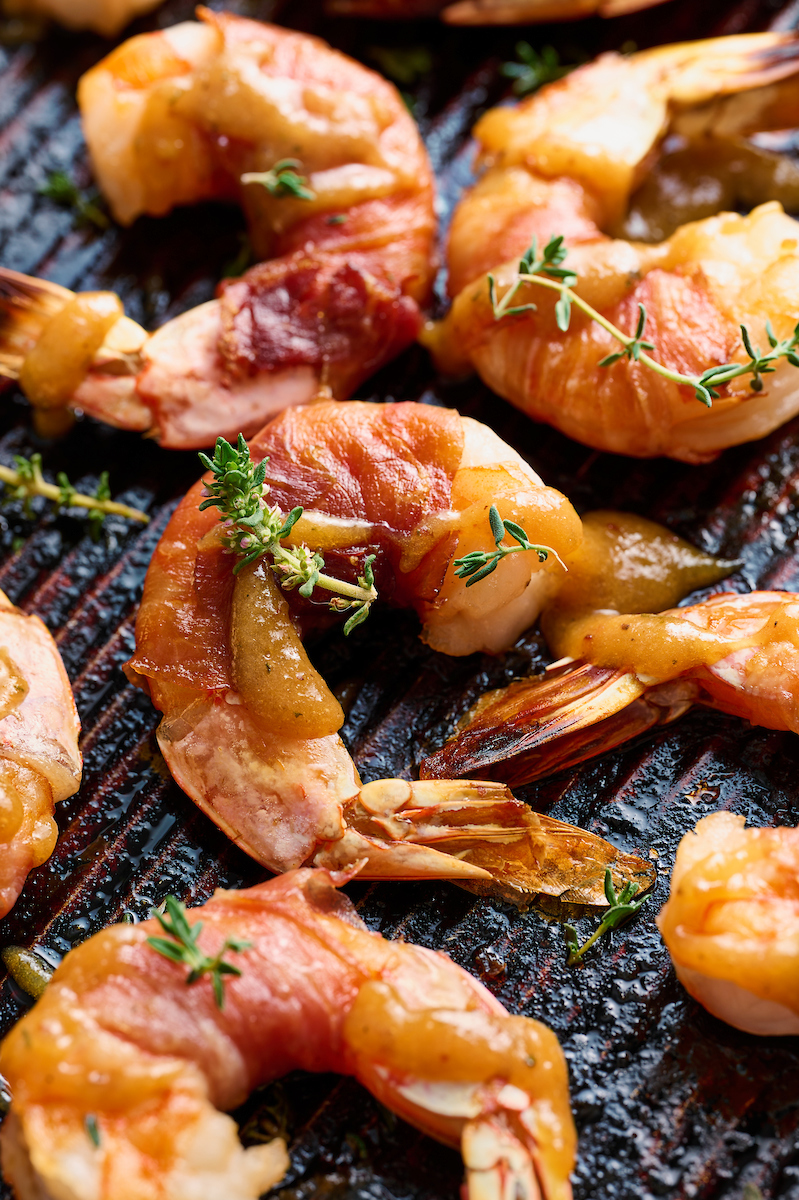Prosciutto is a tasty Italian ham that adds a special touch to many dishes. It’s not just for cheese boards anymore. You can use it in all sorts of recipes, from appetizers to main courses.
There are many ways to cook with prosciutto that you might not have thought of before. You can wrap it around fruits or veggies, add it to pasta, or put it on pizza. These recipes will show you how to make the most of this delicious ingredient in your cooking.

1. Prosciutto-Wrapped Asparagus
This elegant appetizer combines crisp asparagus with savory prosciutto. It’s quick to prepare and perfect for spring gatherings.
To make it, wrap each asparagus spear with a thin slice of prosciutto. Place them on a baking sheet and roast in the oven until crispy.
The dish is ready in about 20-25 minutes. It’s versatile enough for Easter brunch, Mother’s Day lunch, or graduation parties.
For extra flavor, add a sprinkle of lemon zest before serving. This brightens up the taste and complements the salty prosciutto nicely.
You can prepare this dish ahead of time, making it great for busy hosts. It’s also suitable for various eating preferences, adding to its appeal.
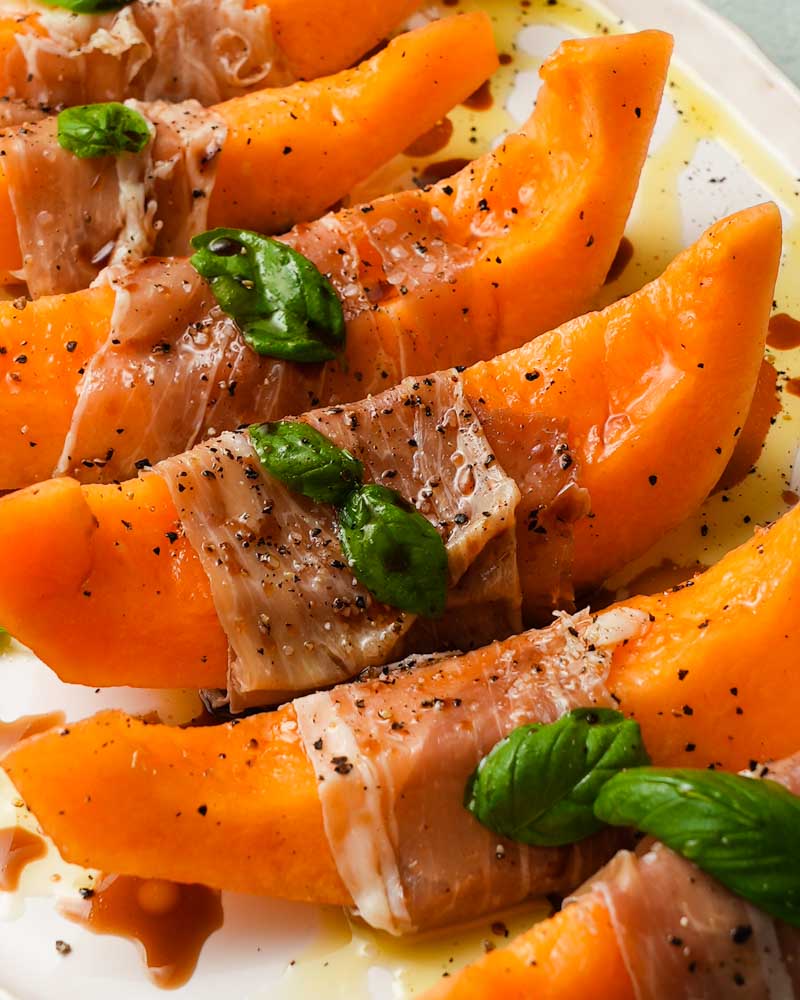
2. Prosciutto and Melon
Prosciutto and melon is a classic Italian appetizer that’s perfect for summer. You’ll love how the sweet, juicy melon pairs with the salty prosciutto.
To make it, cut a ripe cantaloupe or rockmelon into wedges. Wrap each wedge with a thin slice of prosciutto.
For extra flavor, drizzle a balsamic reduction over the top. You can make this by simmering balsamic vinegar with brown sugar until it thickens.
Arrange the wrapped melon slices on a platter and serve. This no-cook dish is easy to prepare and looks impressive. It’s great for parties or as a light snack on hot days.

3. Prosciutto Caprese Salad
Prosciutto Caprese salad is a tasty twist on the classic Italian dish. You’ll love the mix of flavors and textures in this simple recipe.
Start with ripe tomatoes and fresh mozzarella as your base. Tear some basil leaves and scatter them over the top. Add torn pieces of prosciutto for a salty, meaty element.
For extra crunch, you can crisp up the prosciutto in a pan first. This adds a nice contrast to the soft cheese and juicy tomatoes.
Drizzle the salad with olive oil and balsamic vinegar or glaze. Finish with a sprinkle of salt and pepper to taste.
This salad makes a great light meal or side dish. It’s perfect for warm summer days when you want something refreshing.

4. Prosciutto Pizza
Prosciutto pizza is a delicious twist on classic pizza. You can make it easily at home with a few key ingredients.
Start with a pizza crust and spread tomato sauce on top. Add shredded mozzarella cheese for a gooey base.
Lay thin slices of prosciutto over the cheese. The prosciutto will crisp up nicely in the oven.
For extra flavor, try adding arugula after baking. The peppery greens complement the salty prosciutto well.
Bake your pizza until the crust is golden and the cheese is bubbly. The prosciutto will become crispy around the edges.
You can make this pizza in a regular oven or on a grill for a smoky taste. Experiment with toppings to find your perfect combo.

5. Stuffed Chicken Breast with Prosciutto
Stuffed chicken breast with prosciutto is a flavorful and elegant dish you can easily make at home. Start by flattening chicken breasts to about 1/4 inch thickness.
Spread cream cheese on each breast and top with fresh basil leaves. Add 2 slices of prosciutto and roll up the chicken.
You can also stuff the chicken with burrata cheese for extra richness. Secure the rolls with toothpicks if needed.
Dip the stuffed breasts in beaten egg, then coat in breadcrumbs. Sear them in a hot skillet for a few minutes per side until golden brown.
Finish cooking the chicken in a 400°F oven for 20-25 minutes until cooked through. Let it rest briefly before serving.
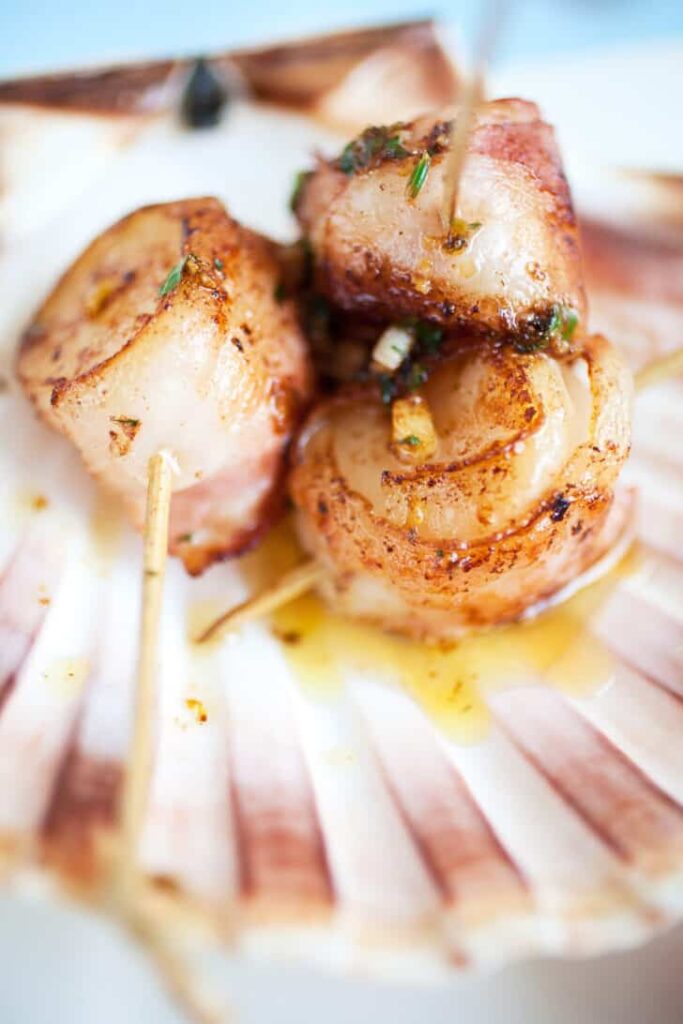
6. Prosciutto-Wrapped Scallops
Prosciutto-wrapped scallops are a tasty and elegant appetizer. You can make them easily at home. Start by wrapping each scallop with a thin slice of prosciutto.
Preheat your oven to 350°F (175°C). Place the wrapped scallops on a baking sheet lined with parchment paper. Make sure they’re not touching each other.
Roast the scallops for about 15 minutes. The prosciutto will become crispy while the scallops cook through. For added flavor, you can brush them with olive oil before cooking.
Serve these delicious bites hot. They’re perfect for parties or as a fancy starter for a dinner at home.

7. Prosciutto and Peach Crostini
Prosciutto and peach crostini make a tasty summer appetizer. Start by toasting slices of baguette until golden brown.
Spread a layer of creamy ricotta cheese on each toast. Top with a folded slice of prosciutto for added texture and flavor.
Add thin slices of ripe peach on top of the prosciutto. The sweetness of the peach balances the salty meat perfectly.
Finish with a few small basil leaves and a crack of black pepper. These crostini offer a mix of sweet, salty, and creamy in every bite.
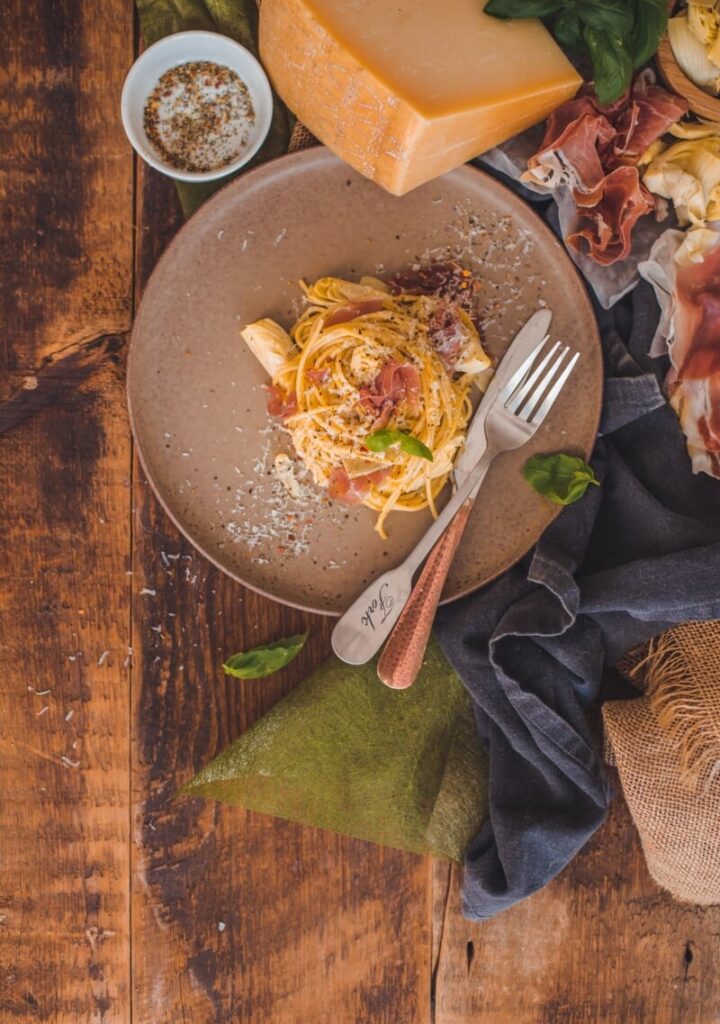
8. Prosciutto Pasta Carbonara
Prosciutto pasta carbonara is a quick and tasty meal you can make in about 15 minutes. Cook your pasta until it’s al dente. While it’s cooking, dice some prosciutto and brown it in a skillet.
In a bowl, mix eggs, Parmesan cheese, and black pepper. When the pasta is done, drain it and quickly toss it with the egg mixture. The heat from the pasta will cook the eggs.
Add the browned prosciutto to your pasta and stir everything together. The result is a creamy, savory dish with a nice salty crunch from the prosciutto.
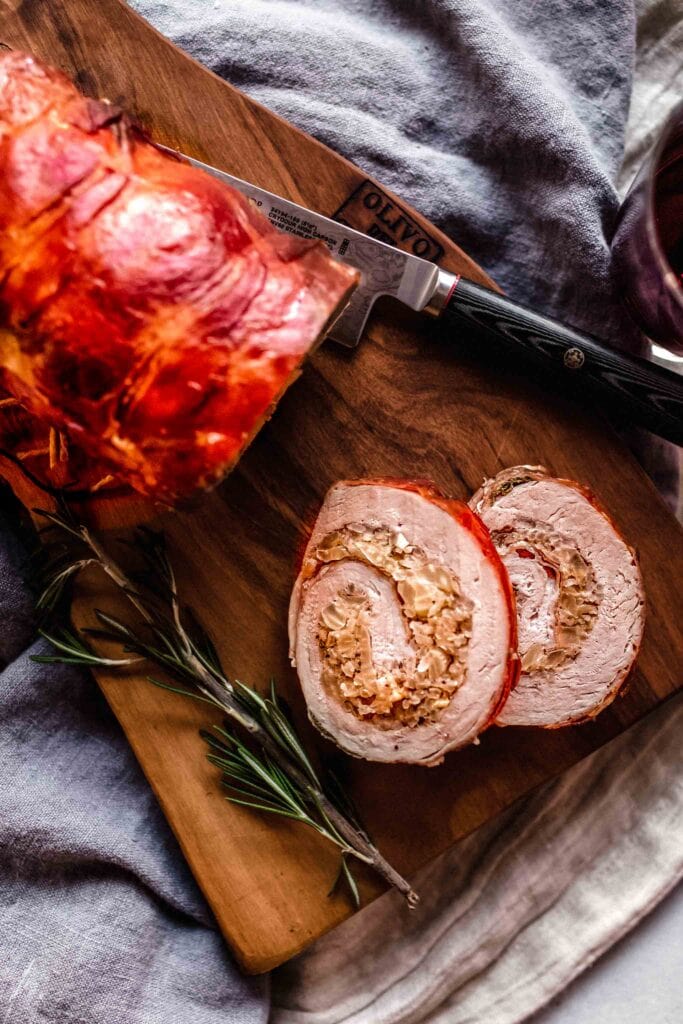
9. Prosciutto-Wrapped Pork Tenderloin
Prosciutto-wrapped pork tenderloin is a delicious and elegant dish you can easily make at home. Start by seasoning the pork with herbs like rosemary and thyme.
Next, wrap the tenderloin in thin slices of prosciutto. This adds flavor and helps keep the pork moist during cooking.
You can brush the wrapped pork with a honey-dijon mixture for extra taste. Roast it in a hot oven until the prosciutto is crispy and the pork reaches 145°F internal temperature.
Let the tenderloin rest before slicing. The result is juicy pork with a crispy, salty exterior that’s sure to impress your guests.
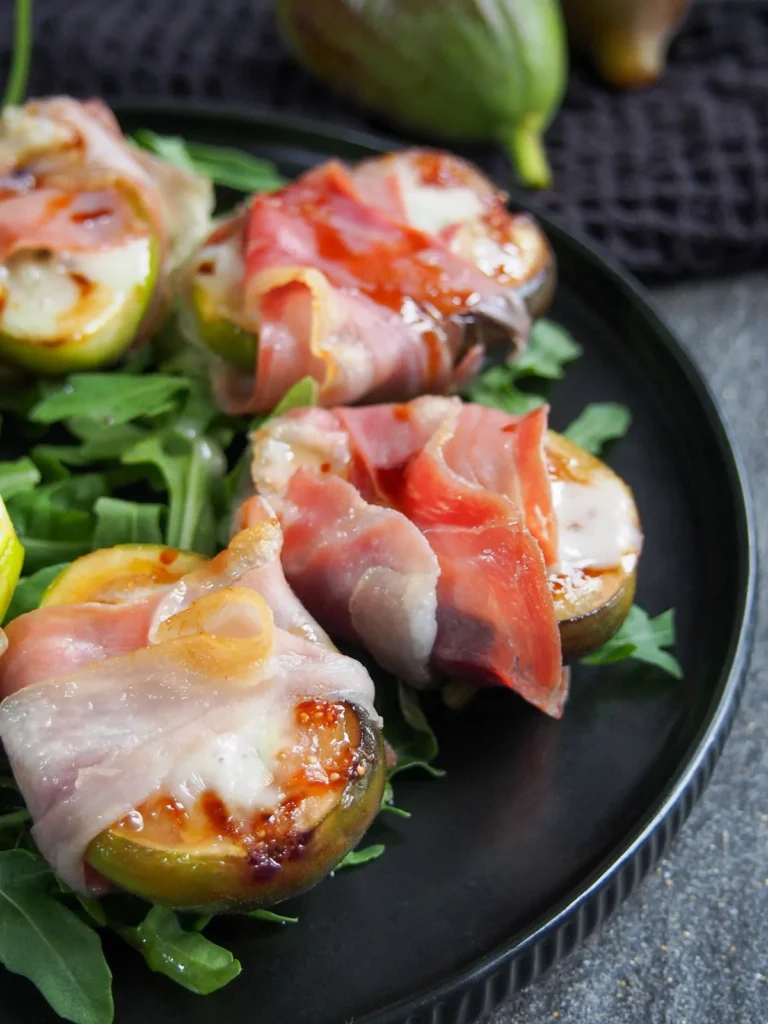
10. Prosciutto-Wrapped Figs
Prosciutto-wrapped figs are a tasty blend of sweet and savory. To make them, start by cutting fresh figs in half lengthwise.
Next, stuff each fig half with a bit of goat cheese. Sprinkle some thyme leaves on top for extra flavor.
Wrap a thin strip of prosciutto around each stuffed fig. The salty meat pairs perfectly with the sweet fruit and creamy cheese.
Place the wrapped figs on a baking sheet. Brush them lightly with olive oil. Roast in a preheated 400°F oven for about 10-15 minutes.
The result is a warm, gooey appetizer that’s sure to impress. Serve these tasty bites at your next gathering for a crowd-pleasing treat.
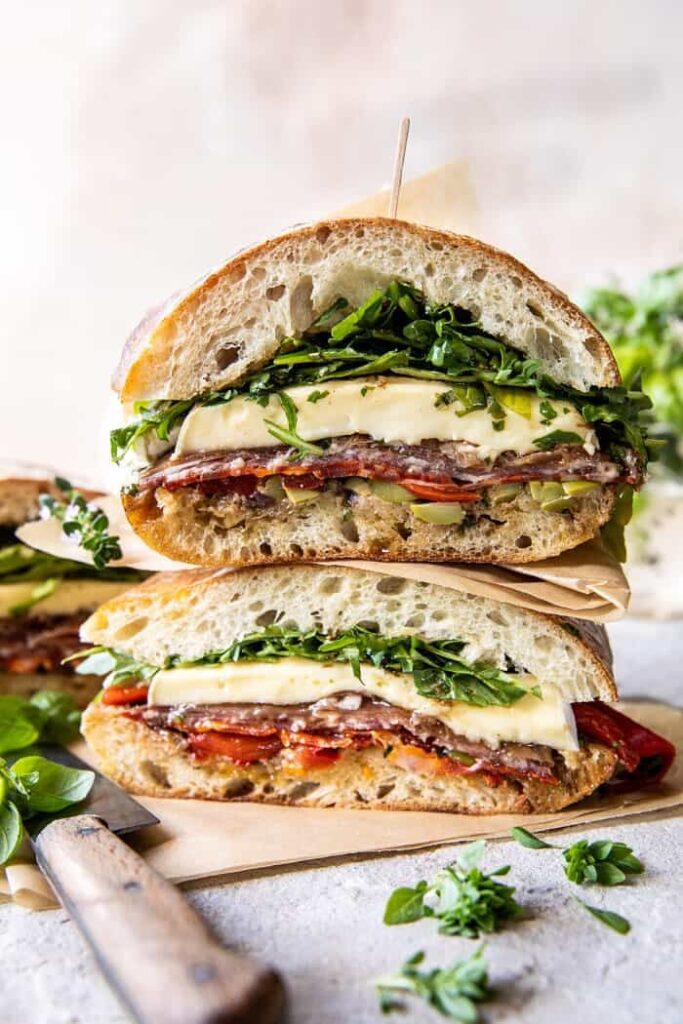
11. Prosciutto and Brie Sandwich
A prosciutto and Brie sandwich is a delicious combination of flavors and textures. You’ll love the salty, savory prosciutto paired with creamy Brie cheese.
Start with a fresh baguette or ciabatta bread. Slice it open and layer thin slices of prosciutto on the bottom half. Add slices of Brie cheese on top of the prosciutto.
For extra flavor, you can drizzle some balsamic glaze or fig jam on the top half of the bread. Add some fresh arugula or other greens for a peppery crunch.
Close the sandwich and enjoy it as is, or warm it up in a pan for melty cheese. This sandwich is perfect for picnics, quick lunches, or easy dinners.
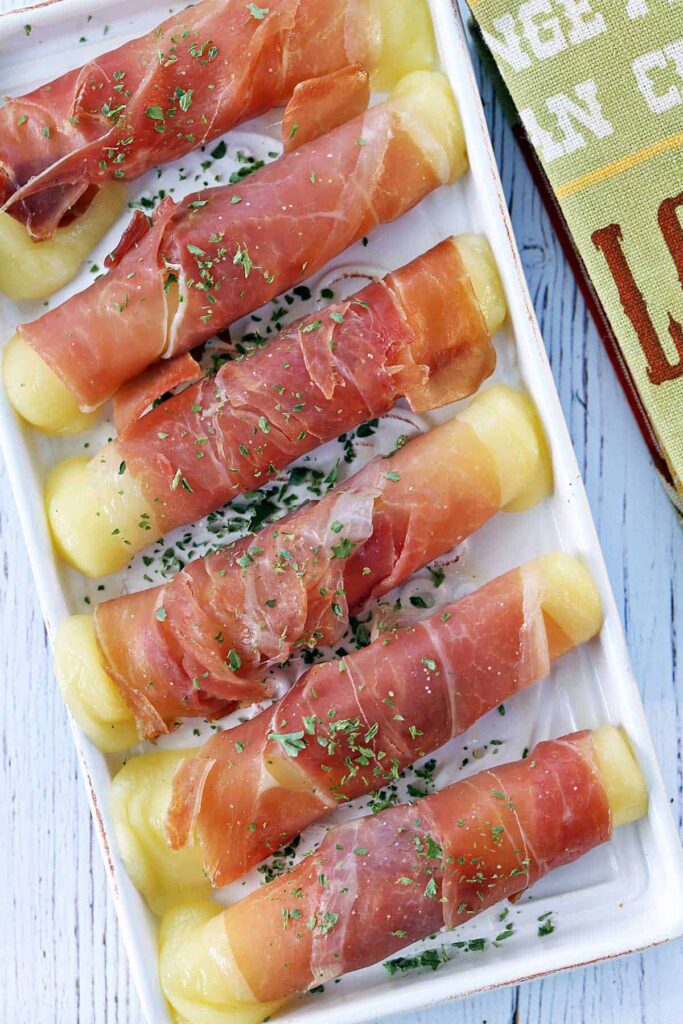
12. Prosciutto-Wrapped Mozzarella Sticks
Prosciutto-wrapped mozzarella sticks are a tasty appetizer that’s easy to make. You’ll need mozzarella sticks and thin slices of prosciutto.
Start by wrapping each mozzarella stick with a slice of prosciutto. Make sure to cover the cheese completely.
You can cook these in a pan or the oven. For pan-frying, melt some butter and cook the wrapped sticks for a few minutes on each side. If using the oven, bake at 400°F for 3-5 minutes.
Serve your prosciutto-wrapped mozzarella sticks warm. The outside will be crispy, and the inside will be gooey. You can add a dipping sauce like marinara if you want.
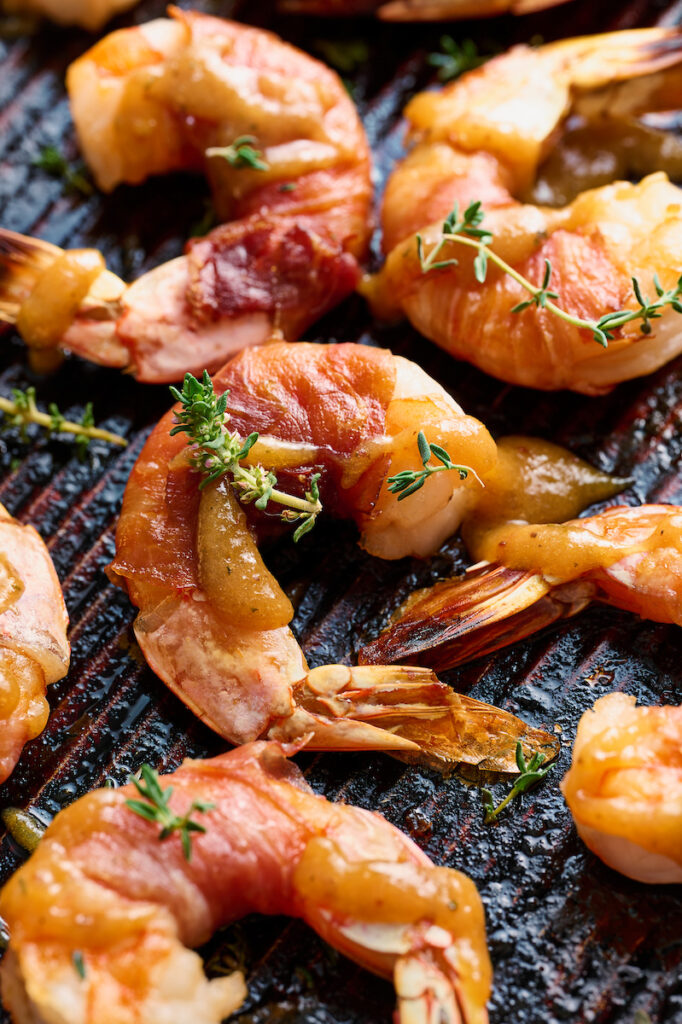
13. Prosciutto-Wrapped Shrimp
Prosciutto-wrapped shrimp is a tasty appetizer that’s easy to make. You only need a few ingredients to create this fancy-looking dish.
Start by marinating the shrimp in a mix of lemon, basil, garlic, and white wine. This adds extra flavor to the seafood.
Next, wrap each shrimp with a thin slice of prosciutto. Secure it with a toothpick if needed.
You can cook these in the oven or under the broiler. They’re done when the shrimp turn pink and the prosciutto gets crispy.
Serve them hot as a party snack or appetizer. Your guests will love the combination of salty prosciutto and juicy shrimp.
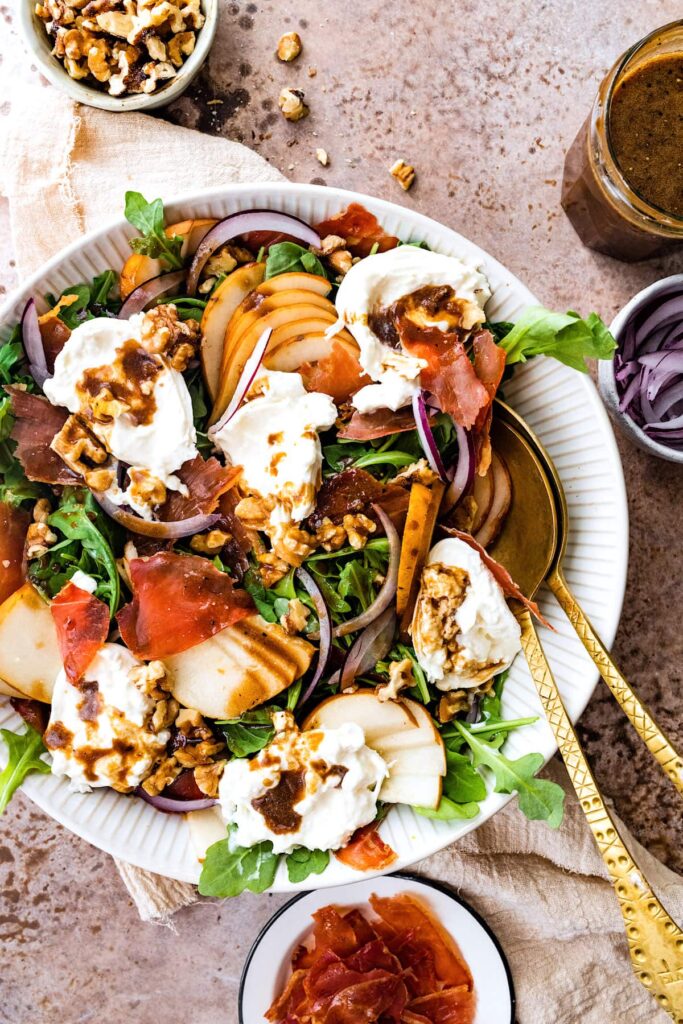
14. Prosciutto and Arugula Salad
Prosciutto and arugula salad is a tasty and simple dish you can make in under 10 minutes. It combines peppery arugula leaves with thin slices of salty prosciutto.
To create this salad, toss fresh arugula with cherry tomatoes and shaved Parmesan cheese. Add crispy croutons and toasted pine nuts for extra crunch.
For dressing, try a homemade fig and balsamic vinaigrette. It complements the flavors perfectly. You can also add creamy burrata cheese for richness.
This versatile salad works as a light lunch, dinner, or side dish. Serve it with crusty bread to soak up the dressing. It’s sure to be a hit at your next meal.
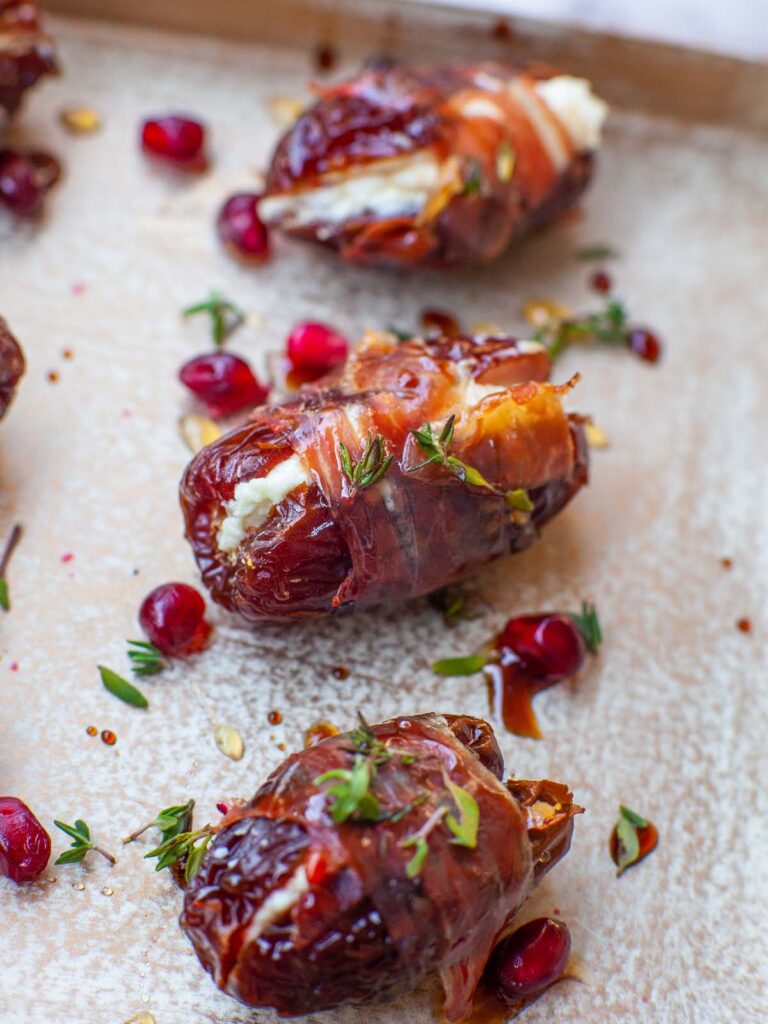
15. Prosciutto-Wrapped Dates
Prosciutto-wrapped dates are a tasty appetizer that’s easy to make. You’ll need dates, prosciutto, and cheese.
Start by preheating your oven to 375°F (190°C). Cut the dates open and remove the pits. Fill each date with about a teaspoon of cheese.
Cut the prosciutto into strips and wrap each stuffed date. Place them on a baking sheet lined with parchment paper.
Bake for 8-12 minutes until the cheese melts and the prosciutto gets crispy. Serve these warm treats right away for the best flavor.
You can add herbs like thyme for extra taste. These bite-sized snacks are perfect for parties or as a quick treat.
History of Prosciutto
Prosciutto has a rich history dating back centuries. This dry-cured ham originated in Italy and has become a beloved delicacy worldwide.
Origins and Evolution
Prosciutto’s story began in ancient Rome. Farmers developed curing methods to preserve pork for long periods. They used salt to draw out moisture and hung hams to dry in the cool air.
Over time, different regions in Italy created their own styles. Parma and San Daniele became famous for their prosciutto. Each area’s climate and traditions shaped unique flavors.
The process stayed largely unchanged for centuries. Pigs were carefully raised and fed. Butchers selected the best hind legs. Curing took months or even years.
Modern technology improved food safety. But traditional methods still dominate prosciutto production. Today, you can find both artisanal and mass-produced versions.
Cultural Significance
Prosciutto holds a special place in Italian culture. It’s a staple in many households and a source of regional pride.
Family gatherings often feature prosciutto as an appetizer. You’ll see it wrapped around melon or grissini breadsticks. It’s also used in cooking, adding flavor to pasta dishes and pizzas.
The art of making prosciutto is passed down through generations. Many producers still use family recipes and techniques. This helps preserve cultural heritage.
Prosciutto has become a symbol of Italian cuisine worldwide. It’s now enjoyed far beyond its homeland. You can find it in upscale restaurants and gourmet shops across the globe.
Nutritional Information
Prosciutto offers some health benefits but also has potential drawbacks. It provides protein and certain vitamins and minerals, while being high in sodium and saturated fat.
Health Benefits
Prosciutto is a good source of protein. A 1-ounce serving gives you about 7 grams. This helps build and repair body tissues.
Prosciutto contains B vitamins like riboflavin, niacin, and B12. These support energy production and brain function.
It also provides some minerals. You’ll get small amounts of iron, zinc, and selenium. These play roles in immune health and cell protection.
The salt curing process increases prosciutto’s vitamin K2 content. This nutrient aids bone and heart health.
Possible Concerns
Prosciutto is high in sodium. One ounce has about 570 mg, nearly 25% of the daily limit. Too much sodium can raise blood pressure in some people.
It’s also high in saturated fat. This type of fat may increase heart disease risk when eaten in large amounts.
Prosciutto is a processed meat. Eating a lot of processed meats might raise cancer risk, especially colorectal cancer.
The nitrates used to cure prosciutto can form nitrosamines. These compounds may be linked to certain cancers.
To balance risks and benefits, enjoy prosciutto in small amounts as part of a varied diet.
Cooking Tips
Prosciutto is a delicate ingredient that requires careful handling. These tips will help you get the most out of this Italian delicacy in your recipes.
Selecting Quality Prosciutto
Look for prosciutto with a rosy pink color and thin white streaks of fat. The meat should feel firm but not dry. Avoid pieces with dark spots or an off smell. Ask the deli counter to slice it paper-thin. This allows the prosciutto to melt in your mouth.
Pre-sliced packages can be convenient, but freshly sliced tastes best. Check the expiration date and make sure the packaging is intact. Higher-quality prosciutto will have a deeper flavor and smoother texture. It’s worth splurging on for special dishes.
Storage and Preservation
Keep prosciutto tightly wrapped in plastic or wax paper in the coldest part of your fridge. It will stay fresh for up to a week. For longer storage, freeze prosciutto for up to 2 months. Wrap it tightly in plastic, then foil to prevent freezer burn.
Thaw frozen prosciutto in the fridge overnight. Use it within 3-4 days of thawing. Don’t refreeze thawed prosciutto. To revive dried out slices, lay them on a damp paper towel for a few minutes. This will restore some moisture.
For the best flavor, bring prosciutto to room temperature before serving. Take it out of the fridge 30 minutes ahead of time. This allows the flavors and aromas to fully develop.
